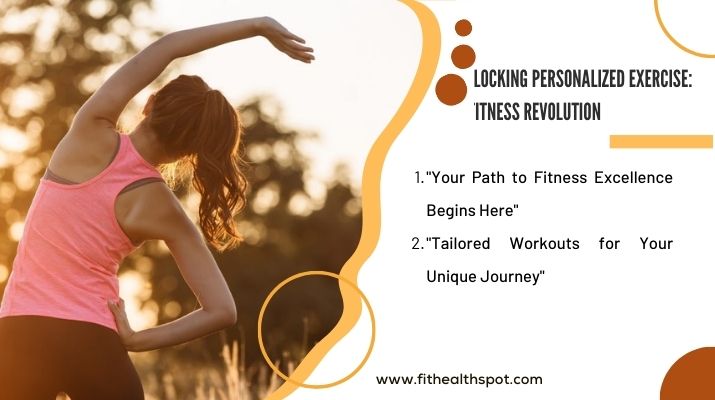Introduction
In the dynamic realm of health and fitness, one size certainly does not fit all. Each individual, with their unique physiology, lifestyle, and goals, requires a tailored approach to exercise. This isn’t just about building muscles or losing weight; it’s about carving out a sustainable, effective, and fulfilling journey towards optimal well-being.
The Importance of Individualized Exercise Routines
Why does John prefer early morning jogs while Jane thrives on evening yoga sessions? The answer lies deep within their genetic makeup, metabolism rates, and daily schedules. Individualized exercise routines recognize these personal nuances, offering a structured plan that aligns perfectly with one’s body requirements and life rhythms.
Furthermore, a customized approach goes beyond mere physical attributes. It touches on the psychological facets of a person. When an exercise routine resonates with an individual’s preferences, they’re more likely to stay committed, experience fewer injuries, and enjoy the process.

Holistic Impact of Personalized Fitness
The ripple effect of a personalized fitness regime is profound. On the surface, it optimizes physical health, ensuring muscles are trained effectively, fat is burned efficiently, and the body is energized. Delving deeper fosters mental well-being. As individuals engage in exercises they love, endorphins—nature’s feel-good chemicals—are released, combatting stress and promoting happiness.
Moreover, this holistic approach subtly intertwines with one’s environmental health. Imagine the profound impact of a community where every individual is active, not forced by generic fitness standards but driven by personalized routines. Such communities exude positivity, reduced healthcare burdens, and an overall enhanced quality of life.
In essence, the journey towards a fitter, healthier self is not about following the crowd. It’s about understanding oneself, listening to the body, and discovering a unique path that brings holistic well-being.
Understanding Exercise Individuality
At the heart of a successful fitness journey lies the concept of individuality. But what fuels this individuality? Why do exercise needs differ so dramatically from one person to the next? To unravel these questions, we must dive deep into the intricate tapestry of genetics, metabolism, physiology, lifestyle factors, and personal aspirations.
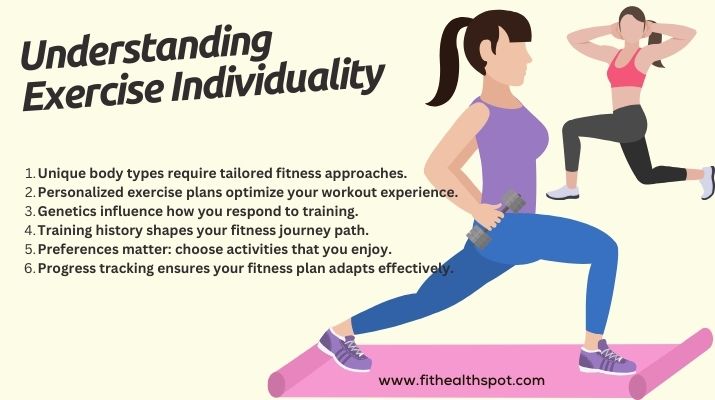
Genetics, Metabolism, and Physiology: The Pillars of Exercise Needs
- Genetics: From the color of our eyes to our predisposition to certain health conditions, genetics plays a pivotal role in shaping us. Similarly, our genes dictate our response to exercise. Some people, for example, might naturally excel in exercises like wrist curls, due to their genetic makeup.
- : Ever wondered why two people eating the same diet and following identical exercise regimes might yield different results? The answer lies in metabolism—the rate at which our bodies burn calories. For a deeper understanding of exercises that influence metabolism, consider reading about the nitric oxide dump exercise.
- Physiology: Each body is a marvel of physiological processes. Factors like muscle fiber type influence how we respond to various exercises. A person with a higher proportion of fast-twitch muscle fibers, for instance, might find workouts like lat spreads particularly beneficial.
Lifestyle Factors and Personal Goals: Steering the Fitness Ship
Beyond our biological makeup, our exercise needs are heavily influenced by external factors:
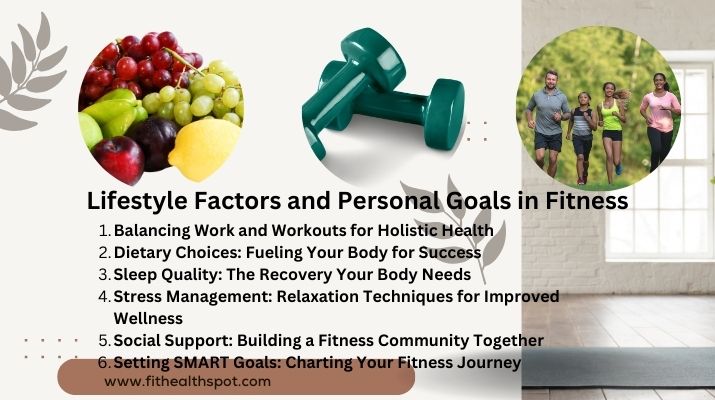
- : A sedentary job might necessitate exercises like calisthenics to combat the effects of prolonged sitting. Conversely, a physically demanding job might require strength training, making exercises like sumo deadlifts a go-to choice for maintaining optimal physical health.
- : Are you aiming for weight loss, muscle tone, or perhaps training for a specific event? Understanding and tailoring exercises based on these goals can make a significant difference. For those looking to enhance their lower body strength, the Bulgarian squat guide offers valuable insights.
In conclusion, while the world of fitness often presents one-size-fits-all solutions, true success lies in acknowledging and embracing our uniqueness. By understanding and integrating our genetics, metabolism, physiology, lifestyle, and goals, we can craft an exercise journey that is both effective and deeply fulfilling.
The Intersection of Environmental Health and Exercise
The term ‘health’ often evokes images of physical wellness, perhaps a toned body or a heart free from ailments. However, health’s canvas stretches far beyond the individual, spilling over into the environment we inhabit. It’s an intricate dance between personal well-being and the health of our surroundings. And at the center of this dance is exercise.
Correlation between Exercise and Environmental Well-Being
Exercise isn’t just about personal gains; it’s also about giving back to the environment. Consider the simple act of choosing to walk or bike to work instead of driving. Not only does this provide cardiovascular benefits, but it also significantly reduces carbon emissions, contributing to cleaner air. Similarly, group exercises or community-based fitness activities can promote communal bonds, leading to shared goals for a cleaner and healthier neighborhood. Dive deeper into exercises like lunges and discover how can they be integrated into everyday scheduleswithout requiring dedicated gym spaces, further reducing our environmental footprint.
How Exercise Positively Impacts Mental Health and Surroundings
Exercise and mental health are inextricably linked. As we engage in physical activity, our body releases endorphins, the brain’s feel-good neurotransmitters. This not only helps in combating stress and anxiety but also promotes a positive outlook. A happier mind can significantly influence our behavior, making us more conscious and caring towards our environment. For instance, a person who feels mentally rejuvenated after a calisthenics workout might be more inclined to participate in community clean-ups or advocate for green initiatives.
Moreover, outdoor exercises expose individuals to nature, fostering a deeper appreciation for their surroundings. This bond with nature often translates to eco-friendly choices in daily life, from recycling to supporting sustainable practices.
In essence, exercise acts as a bridge, connecting personal health with environmental health. We inadvertently sow seeds for a healthier planet as we prioritize our well-being through physical activity.
Hydration and Exercise: A Vital Connection
Water is the elixir of life, playing a pivotal role often likened to oil in the machinery of our bodies. This elixir takes on even greater importance when we exercise, becoming a key player in the symphony of muscle contractions, temperature control, and overall performance.

The Crucial Role of Water in Muscle Function and Temperature Regulation
Muscles are predominantly water, and any drop in hydration levels can lead to diminished performance. Water helps transport vital nutrients to cells, assisting in the regeneration and development of muscle tissues. In essence, hydration ensures our muscles work efficiently and recover faster post-exercise.
Furthermore, exercising produces heat, and it’s through sweating and the evaporation of this sweat that our bodies regulate temperature. Without sufficient hydration, not only does our ability to sweat diminish, but we also risk overheating, which can have serious health consequences.
Essential Tips for Staying Hydrated During Workouts
- Start Hydrated: Consume a glass of water about 30 minutes before exercising.
- : During workouts, it’s better to take small sips of water at regular intervals rather than consuming a large quantity all at once.
- : Thirst is a sign that you must hydrate. However, don’t wait to get thirsty. Make it a habit to drink periodically.
- : Consider beverages that replenish lost salts and minerals for prolonged exercises.
Exercise: A Natural Antidote to Stress
Stress has become an uninvited companion for many in the fast-paced modern world. While various remedies have been proposed, one method stands out in its efficacy and accessibility: exercise.
How Physical Activity Triggers Positive Chemical Changes in the Body
As we move, our body releases endorphins, often called “feel-good hormones.” These neurochemicals act as natural painkillers, improving mood and inducing a sense of well-being. Beyond endorphins, exercise also stimulates the release of serotonin, dopamine, and norepinephrine, all of which play pivotal roles in mood regulation and combatting feelings of anxiety and depression.
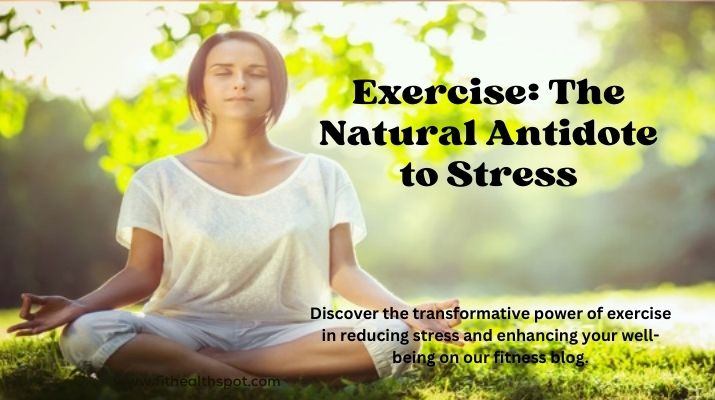
The Range of Exercise Routines Known for Promoting Mental Relaxation
- Yoga: A blend of physical postures and breath control, yoga is renowned for its stress-reducing properties.
- : Running, swimming, and cycling elevate the heart rate, improving cardiovascular health and releasing tension.
- : Exercises like hack squats or kettlebell swings not only build muscle but also act as an outlet for pent-up stress.
- Mind-Body Practices: Tai Chi and Pilates, for instance, enhance physical flexibility while simultaneously calming the mind.
In sum, as we navigate life’s challenges, incorporating a robust exercise routine can be our secret weapon against stress, offering a respite and rejuvenating both body and mind.
Desk-Friendly Exercises: Toning the Inner Thighs
In the modern world, a significant chunk of our day is often spent seated at desks, leading to a sedentary lifestyle that isn’t conducive to good health. But here’s the good news: even within the confines of an office setting, there are exercises we can engage in, particularly those targeting the inner thighs.
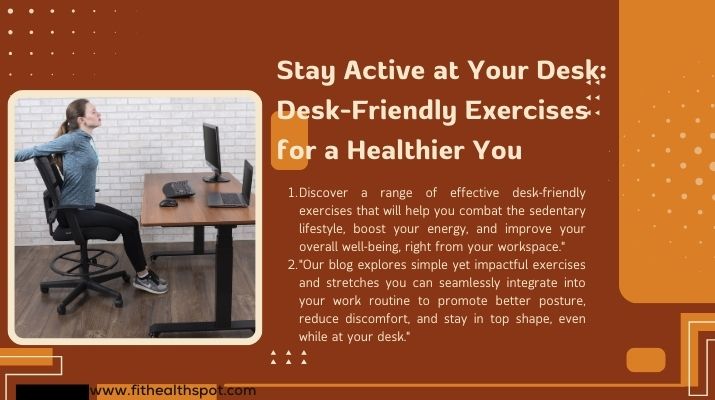
Emphasizing Movement During Work for Health
Physical inactivity, especially prolonged sitting, can lead to many health issues, from muscle atrophy to poor blood circulation. By incorporating small bursts of exercise throughout the workday, not only can we negate some of these issues but also improve overall productivity and mental alertness. Remember, a little movement can go a long way!
A Guide to Inner Thigh Exercises Suitable for Office Settings
- Seated Leg Lifts: Sitting on the edge of a sturdy chair, straighten one leg out in front while keeping the other foot flat on the floor. Raise the straightened leg as high as possible, then lower without touching the ground. Repeat for 10-15 reps, then switch legs.
- : Place a soft object (like a stress ball or folded sweater) between your thighs. Squeeze the object with your thighs, hold it briefly, and release it. This is great for engaging the adductor muscles of the inner thigh.
- Chair Crossover: Cross one leg over the other while seated, placing your ankle on the opposite knee. Press gently on the raised knee using your hand for added resistance.
Exploring the Kettlebell Bottoms-Up Movement
Kettlebells, with their distinctive shape and versatile nature, have become a staple in many fitness routines. Among the myriad kettlebell exercises, the bottoms-up movement has garnered attention for its unique blend of strength and stability challenges.

A Brief Overview of Kettlebell Exercises
Originally from Russia, kettlebells offer a unique workout, melding strength training with cardiovascular benefits. Unlike traditional weights, kettlebells’ center of gravity extends beyond the hand, demanding more balance and core strength from the body. This makes kettlebell exercises both dynamic and rewarding.
Delving into the Benefits and Techniques of the Bottoms-Up Movement
The bottoms-up movement is when the kettlebell is held with its weighted bottom facing upwards. This requires immense grip strength, forearm endurance, and shoulder stability.
Benefits:
- : Holding the kettlebell in a bottoms-up position challenges the grip, strengthening the hands and forearms.
- : The unstable nature of the bottoms-up hold demands more from the rotator cuff muscles, aiding in shoulder stabilization.
- Core Engagement: With the weight being unstable, the core muscles are constantly engaged to ensure balance and control.
Technique:
- Raise the kettlebell, flipping it so the bottom faces up. Maintain a firm grip throughout.
- With the kettlebell in the bottoms-up position, you can incorporate various movements, from presses to lunges, adding complexity and engagement.
Incorporating the kettlebell bottoms-up movement into one’s fitness routine can significantly enhance strength, stability, and overall functional fitness.
Conclusion
In our journey through the multifaceted world of exercise, one thing remains abundantly clear: the “one size fits all” approach is a myth. Like any other facet of our lives, exercise is deeply personal, molded by our genetics, goals, and lifestyles.
A Recap on the Significance of Personalized Exercise Regimes
Every individual is unique, and so are their exercise requirements. From understanding the profound connection between our environmental health and exercise habits to the intricacies of muscle movements during desk jobs or kettlebell exercises, it’s imperative to personalize our fitness routines. This individuality ensures we’re not just moving but moving right, drawing maximum benefits from our efforts.
And while the types and forms of exercises may vary, the core principle remains the same: movement is essential. Whether it’s through calisthenics, kettlebell workouts, or simple hydration habits during workouts, the aim is holistic well-being.
A Call to Action: Prioritizing Health Through Regular Fitness Routines
The fitness journey isn’t a sprint; it’s a marathon. And like any long journey, it’s filled with its fair share of ups and downs. But through consistent effort, informed choices, and a bit of sweat, the rewards are manifold: a healthier body, a more positive mindset, and a life brimming with energy.
As we wrap up, here’s a gentle reminder: Every drop of sweat is a step toward a better you. Every stretch, every rep, every moment you choose to move is a declaration of commitment to your well-being. So, let’s prioritize our health, lace up those trainers, pick up those weights, and embark on a lifelong journey of fitness.
What is the best time of day to exercise?
While there’s no universally “best” time to exercise, many people find that working out in the morning helps kick-start their day and boosts energy levels. However, others might feel more strength and endurance during evening workouts. Finding a time that suits your schedule and energy rhythms is essential.
How often should a beginner work out?
2-3 days a week is recommended for someone new to exercising. This allows the body to acclimate to the new routine, minimizing the risk of injury. As endurance and strength build, one can gradually increase the frequency.
Is it better to work out at home or at a gym?
Both have their advantages. Home workouts offer convenience and privacy, while gyms provide a wider range of equipment and a social environment, which can motivate some. The best choice depends on individual preferences, goals, and available resources.
How do I know if I’m over-exercising?
Signs of over-exercising include persistent fatigue, decreased performance, increased injuries, disrupted sleep, and prolonged recovery times. If you’re experiencing these, giving your body adequate rest and possibly consulting with a fitness expert is essential.
Can I exercise every day?
While daily exercise is beneficial, it’s crucial to vary the type and intensity of workouts to give specific muscle groups time to recover. Including rest or active recovery days, like stretching or light walking, can also help prevent injuries and support overall well-being.

